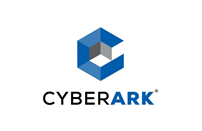
 In this article, we’ll present a new hooking technique that we have found during our research work.
In this article, we’ll present a new hooking technique that we have found during our research work.
Hooking techniques give you the control over the way an operating system or a piece of software behaves. Some of the software that utilizes hooks include: application security solutions, system utilities, tools for programming (e.g. interception, debugging, extending software, etc.), malicious software (e.g. rootkits) and many others.
Please note, this is neither an elevation nor an exploitation technique. This technique is intended for post-exploitation scenario where the attacker has control over the asset. Since malicious kernel code (rootkits) often seeks to establish persistence in unfriendly territory, stealth technology plays a fundamental role.
Technical Description
The GhostHook technique we discovered can provide malicious actors or information security products with the ability to hook almost any piece of code running on the machine.
Let’s start by explaining the primary technology involved in this technique, Intel® PT:
Intel Processor Trace (Intel PT) is an extension of Intel® Architecture that captures information about software execution using dedicated hardware facilities that cause only minimal performance perturbation to the software being traced.
This information is collected in data packets. The initial implementations of Intel PT offer control flow tracing, which generates a variety of packets to be processed by a software decoder.
The packets include timing, program flow information (e.g. branch targets, branch taken/not taken indications) and program-induced mode related information (e.g. Intel TSX state transitions, CR3 changes). These packets may be buffered internally before being sent to the memory subsystem or another output mechanism that is available in the platform.
Debug software can process the trace data and reconstruct the program flow. Here’s a list of a change-of-flow instructions which Intel PT traces:
| Type | Instructions |
| Conditional Branch | JA, JAE, JB, JBE, JC, JCXZ< JECXZ, JRCXZ, JE, JG, JGE, JL, JLE, JNA, JNAE, JNB, JNBE, JNC, JNE, JNG, JNGE, JNL, JNLE, JNO, JNP, JNS, JNZ, JO, JP, JPE, JPO, JS, JZ, LOOP, LOOPE, LOOPNE, LOOPNZ, LOOPZ |
| Unconditional Direct Branch | JMP (E9 xx, EB xx), CALL (E8 xx) |
| Indirect Branch | JMP (FF /4), CALL (FF /2) |
| Near Ret | RET (C3, C2 xx) |
| Far Transfers | INTn, INTO, IRET, IRETD, IRETQ, JMP (EA xx, FF /5), CALL (9A xx, FF /3), RET (CB, CA xx), SYSCALL, SYSRET, SYSENTER, SYSEXIT, VMLAUNCH, VMRESUME |
Intel PT was initially released as part of “Broadwell” (5th-generation) CPU and was expanded on “Skylake” (6th-generation) CPU.
So basically, Intel PT provides low overhead hardware that executes tracing on each hardware thread using dedicated hardware (implemented entirely in hardware) in the CPU’s Performance Monitoring Unit (PMU). Intel PT can trace any software the CPU runs including hypervisors (except for SGX secure containers).
This technology is primarily used for performance monitoring, diagnostic code coverage, debugging, fuzzing, malware analysis and exploit detection…Click HERE to read full research.





